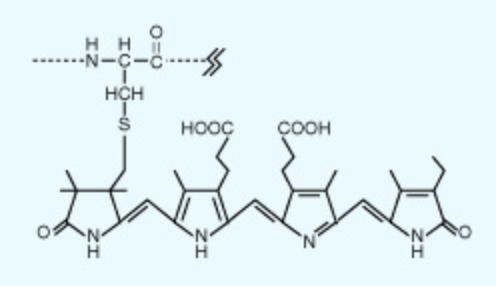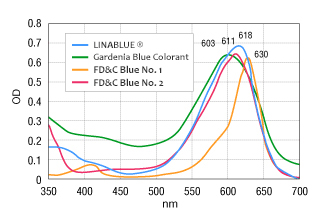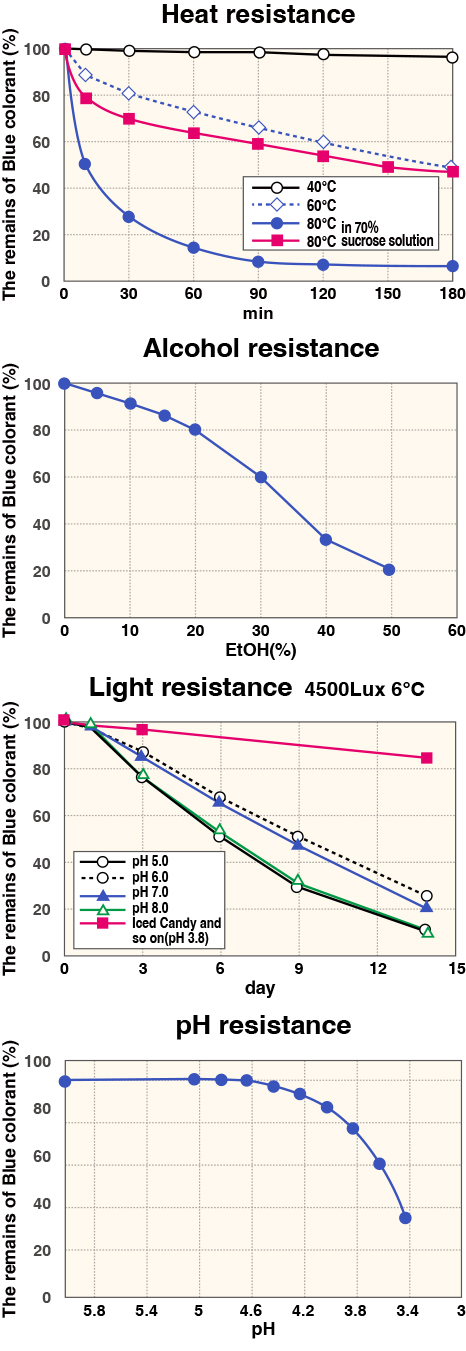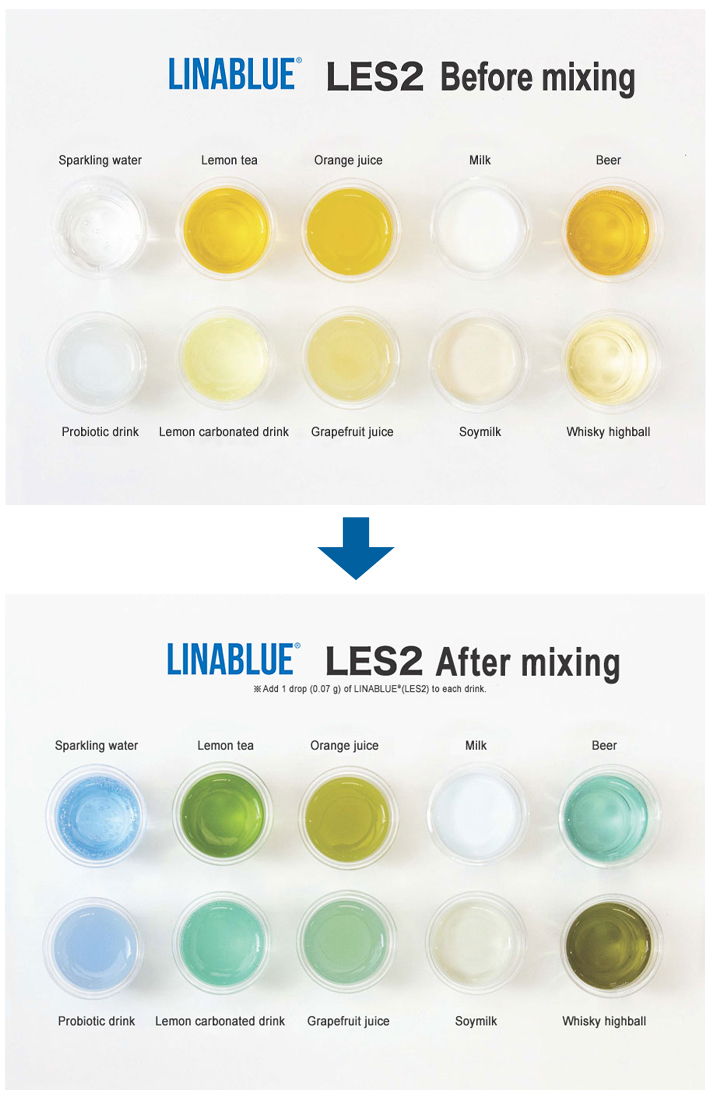LINABLUE® – The blue colorant derive d from DIC Spirulina
LINABLUE® is a natural blue food colorant of phycocyanin derived from DIC spirulina.By mixing with red, yellow and other colorants, it is possible to produce green, purple and other neutral colors.
Like chlorophyll and carotenoid, phycocyanin takes part in photosynthesis.
Spirulina is a spiral-shaped type of microalgae around 0.3 to 0.5mm in size that came into existence around 3 billion years ago. Its shape has remained unchanged since the time it came into being and it was the first organism to create oxygen on the planet, which demonstrates what a hardy lifeform it is. Spirulina contains nutrients such as protein, vitamins, minerals and photosynthetic pigments. Due to the way it developed, Spirulina has properties found in animals and properties found in plants, which complement each other to make Spirulina a superb comprehensive nutritional supplement usable in health foods and other applications.


LINABLUE® exhibits stable properties.
1.SolubilityLINABLUE® powder dissolves quickly in cold or warm water to make a homogeneously transparent solution.
2. pH stability
Its color shade is stable between pH 4,5 – 8,0. Aggregation and precipitation occur at around pH 4,2 as phycocyanin’s structure is combined with protein. Its stability is improved when used together with milk, egg or other ingredients containing protein.。
3.Heat stability
It is recommended to add LINABLUE® to a solution after it is cooled down. It can also be added to a solutiont hat is 60°C or cooler, but should be cooled down further immediately after adding in LINABLUE®. Its stability improves in high density sucrose solutions.
4.Light stability
Its color shade deteriorates when exposed to light, but when used together with an antioxidation agent like sodium ascorbate, its color stability is improved.
5.Solubility in alcohol
Precipitation occurs if used in 100% alcohol, but LINABLUE® can be dissolved in solutions with less than 20% alcohol.
6.Stability in the presence of metal ions
Although affected by trivalent metal ions such as Fe3+ and Al3+, this can be mitigated through the use of a sequestering agent.
Characteristics of LINABLUE®
2. When dissolved in water, the color shade is vivid sky blue.
3.The wavelength of maximum absorbance ( max) is 618 nm, midway between the synthetic colorants Brilliant Blue FCF (FD&C Blue No. 1) and Indigo Carmine (FD&C Blue No. 2).

LINABLUE® Physical Properties

“LINABLUE®” Mixing experiment
Add 1 drop (0.07 g) of LINABLUE ® (LES2) to each drink.
1: Subtle difference in yellow
2: pH
3: Alcohol
As the graph in “physical property” shows, LINABLUE ® tends to turn green when the pH is low. Also, alcohol tends to turn green.
In the image above, the white drink may not look colored, but it is actually light blue.
LINABLUE ® is not only blue, it can also change a beautiful variety of greens.



